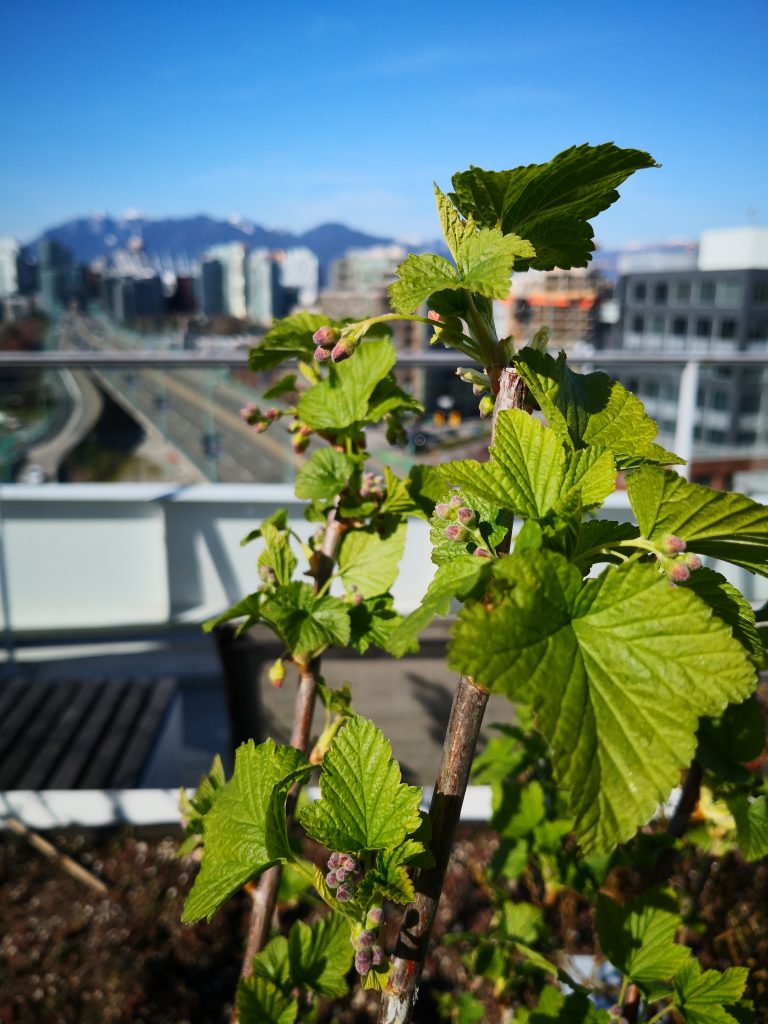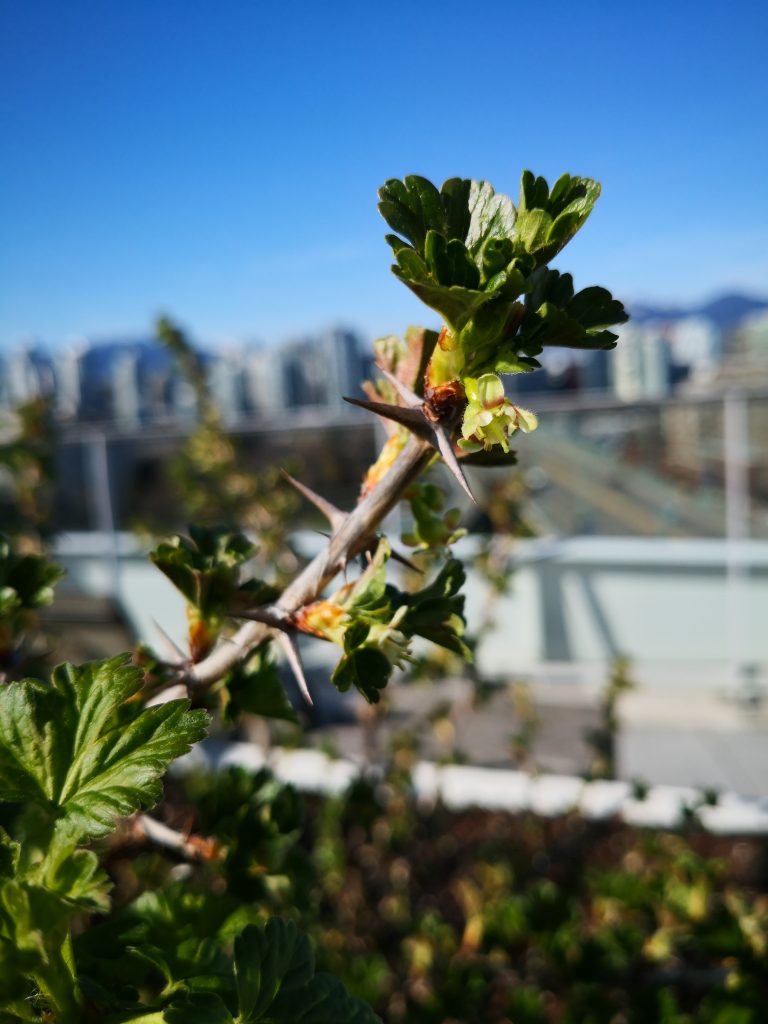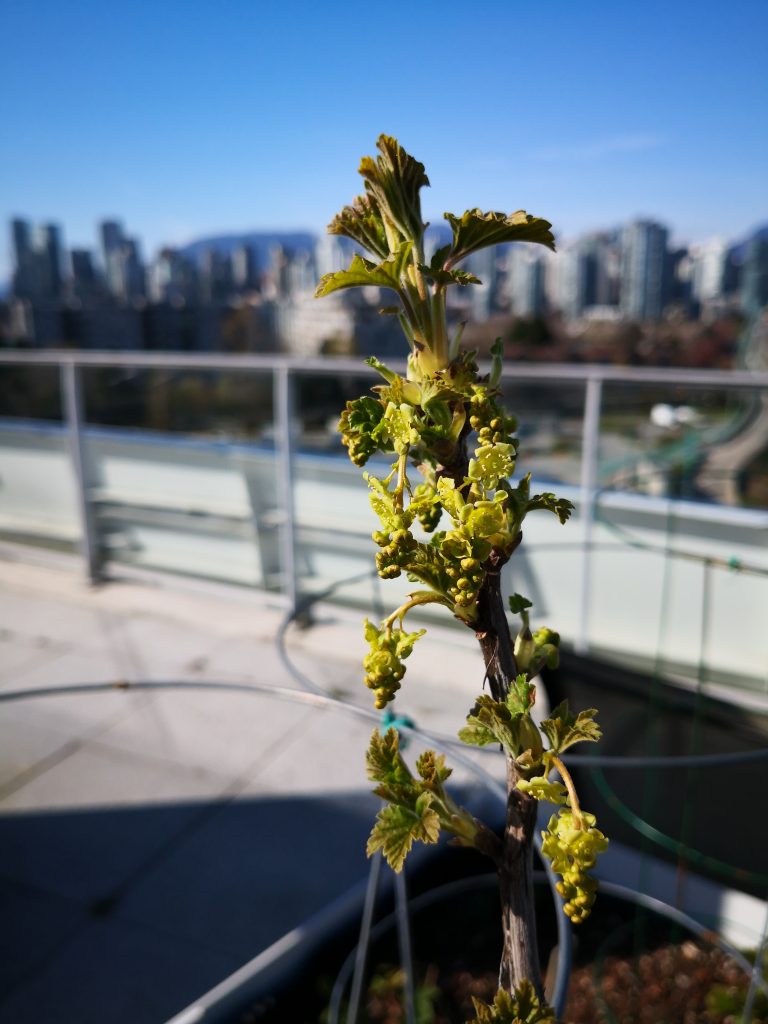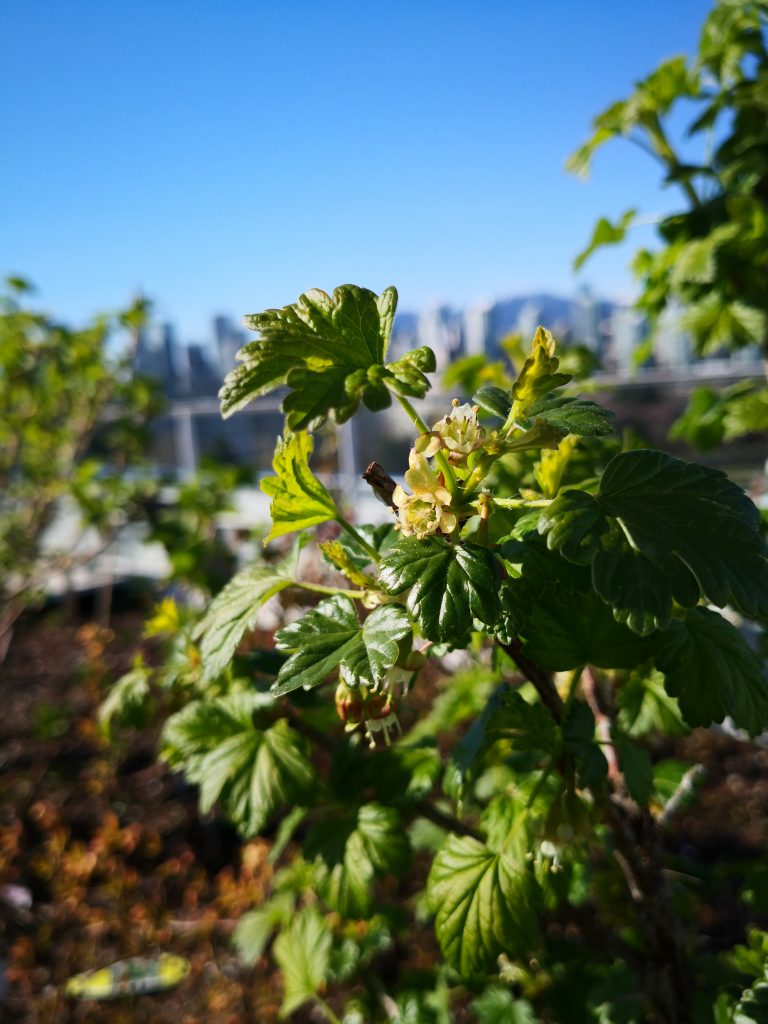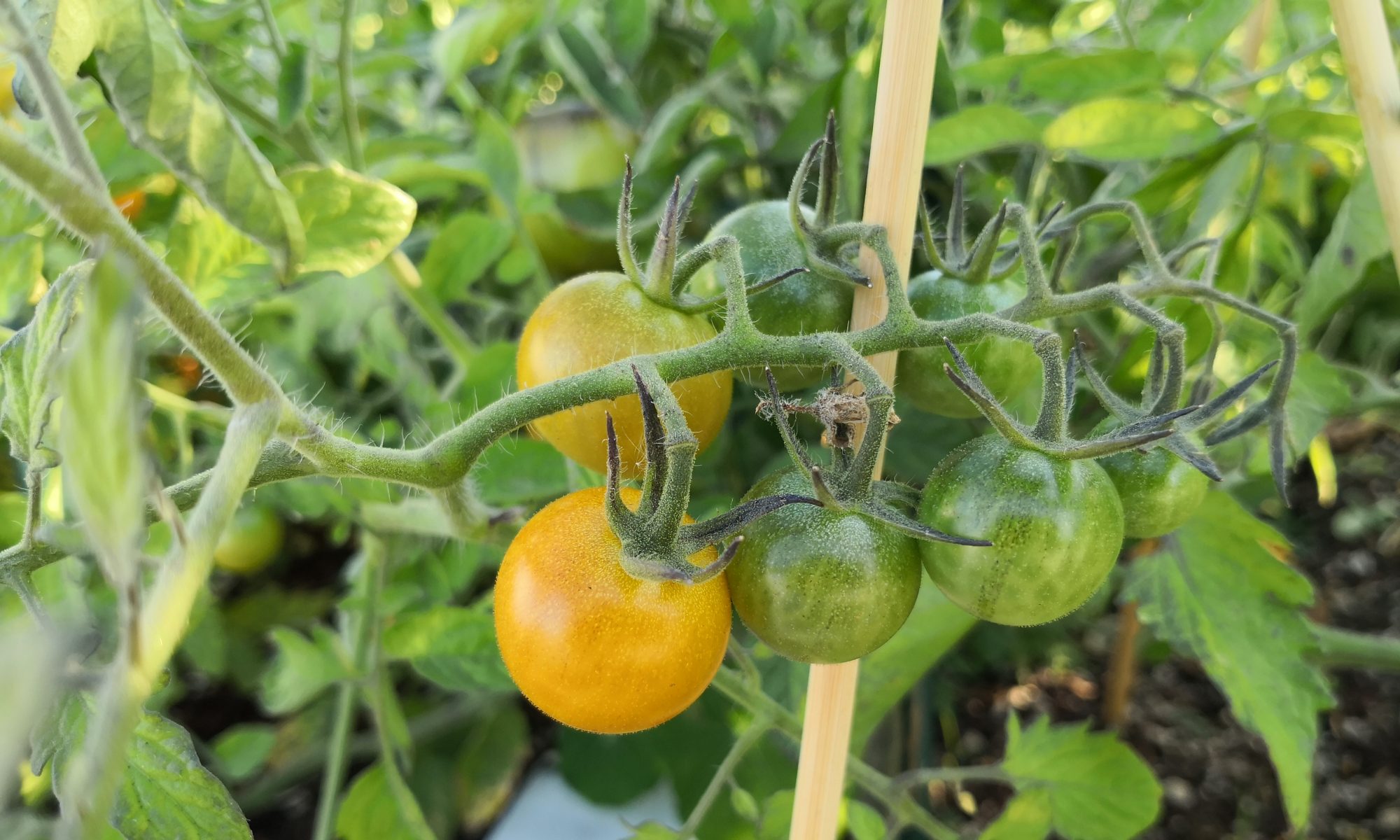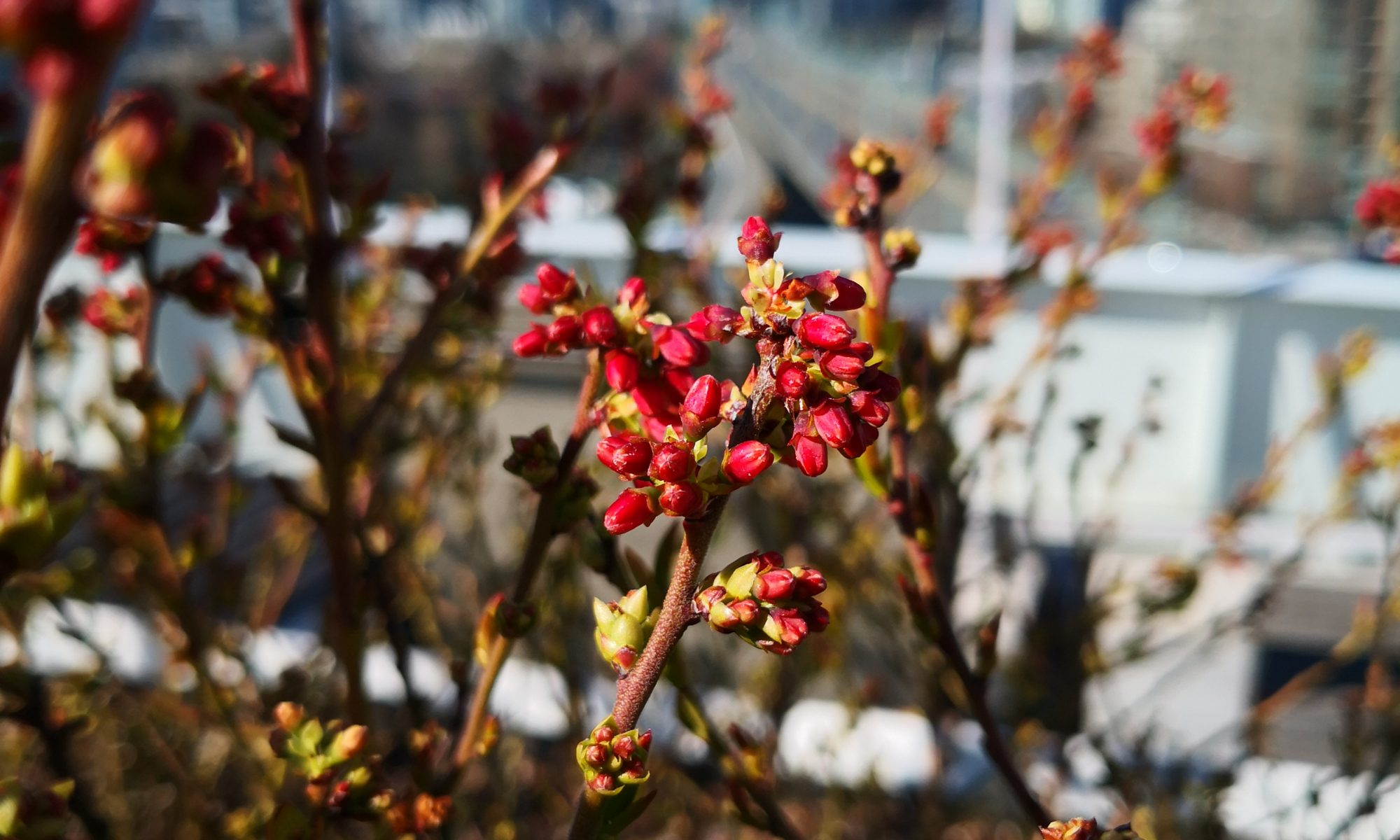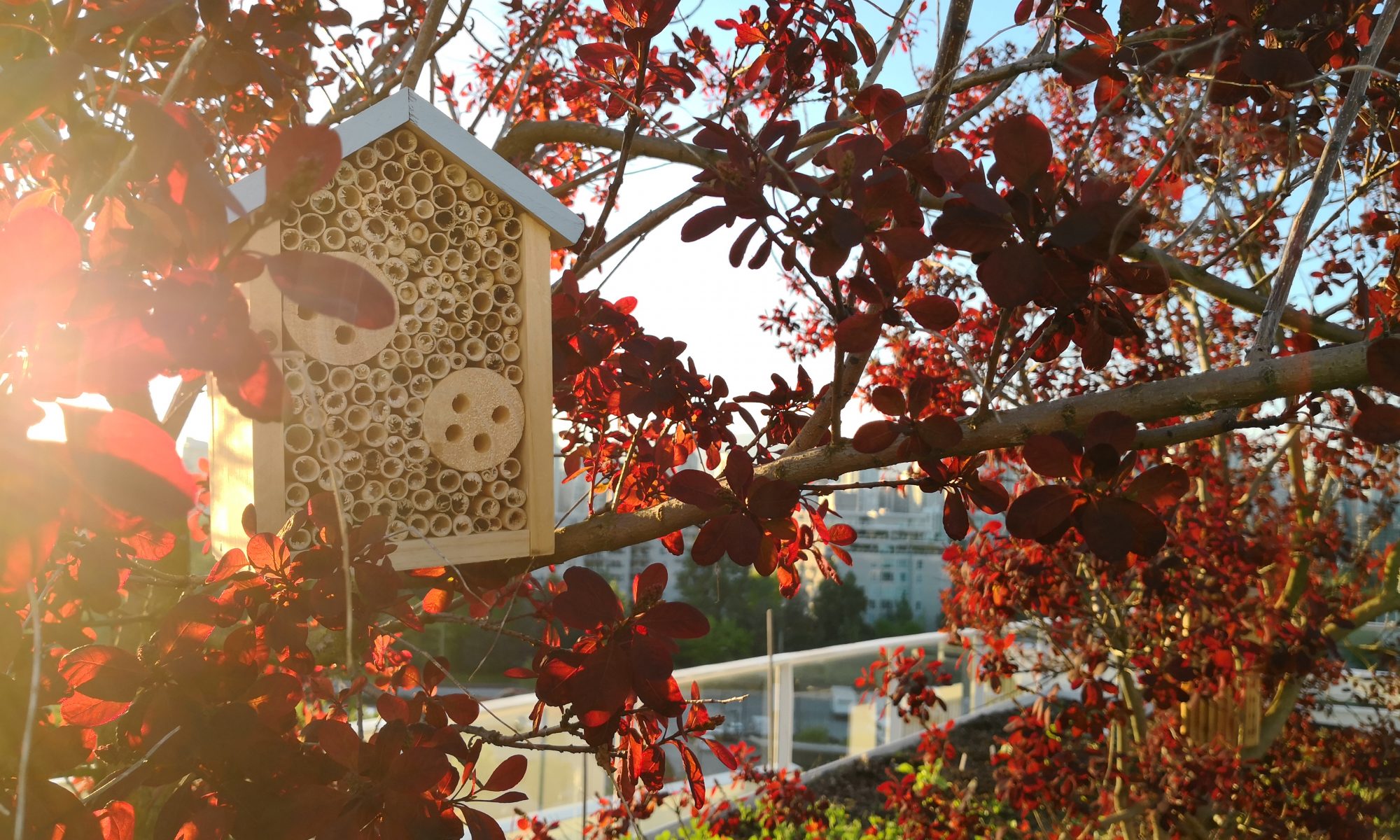Our mason bees have mostly emerged and unfortunately our rooftop is almost devoid of flowers. With the exception of a large rosemary plant, and some heather there is very little to keep the bees around right now. At ground level the cherry blossoms are out, so hopefully that vertical distance isn’t too much to prevent them from returning over the next little while.
On the upside, our berry bushes are showing leaves and FAR more flower buds than we saw over the past two years. Red currants, black currants, gooseberries and blueberries have started flowering over the past week and while the flowers aren’t the bright pinks and reds of some other plants, it looks like they’ll be available in abundance. If we’re lucky there are still enough mason bees around to pollinate them as we have yet to see any volume of honey bees or bumblebees.
Here’s hoping that the combination of warmer weather and more abundant berry blossoms will do the trick.
